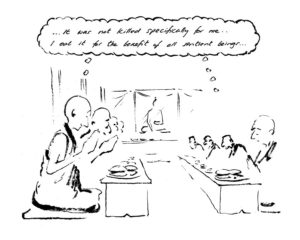Definition of the Week (36) – Pliancy
☞ Definition: Pliancy is the mere workability of body and mind that comes about through having severed the continuity of physical and mental destructive tendencies.
☞ Pliancy has the function of eliminating all obscurations.
☞ Being a consciousness that has cut off the continuity of physical and mental negative tendencies, pliancy creates the imprints for being able to place the mind on any virtuous object for as long as one wishes.
Physical and mental destructive tendencies refers to the inability to engage into physical or mental virtuous actions as one wishes. Mental and physical negative tendencies block joy in regard to abandoning the mental afflictions.
Their antidote, physical and mental pliancy, is an extreme suppleness of body and mind that is devoid of physical and mental negative tendencies and that makes it possible to easily engage into virtuous actions on a continual basis.
☞ Divisions: Pliancy is divided into two, physical and mental pliancy:
- Physical pliancy: Having purified physical destructive tendencies through the power of concentration, this pliancy makes the body very light. One can meditate for long periods at a time without physical discomfort.
- Mental pliancy: A workable consciousness that, having abandoned destructive mental tendencies through the power of concentration, can engage the mind with an internal virtuous object without obstruction.
☞ Concerning pliancy, Lama Tsong Khapa says:
The king that empowers the mind for absorption;
If placed, immovable like the power of a mountain;
If directed, engaging every virtuous focus;
Inducing great bliss of physical and mental pliancy.
☞ Regarding eliminating all obscuration as the function:
Through the force of pliancy all physical and mental destructive tendencies are purified and one will naturally stay in concentration. This greatly increases concentration and through this, in turn, the bliss of pliancy increases also. The further increase of the bliss of pliancy leads to a further proportional increase in concentration.


